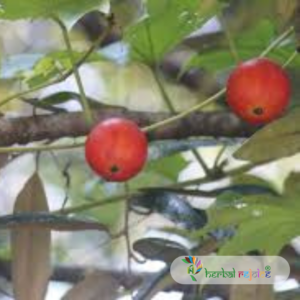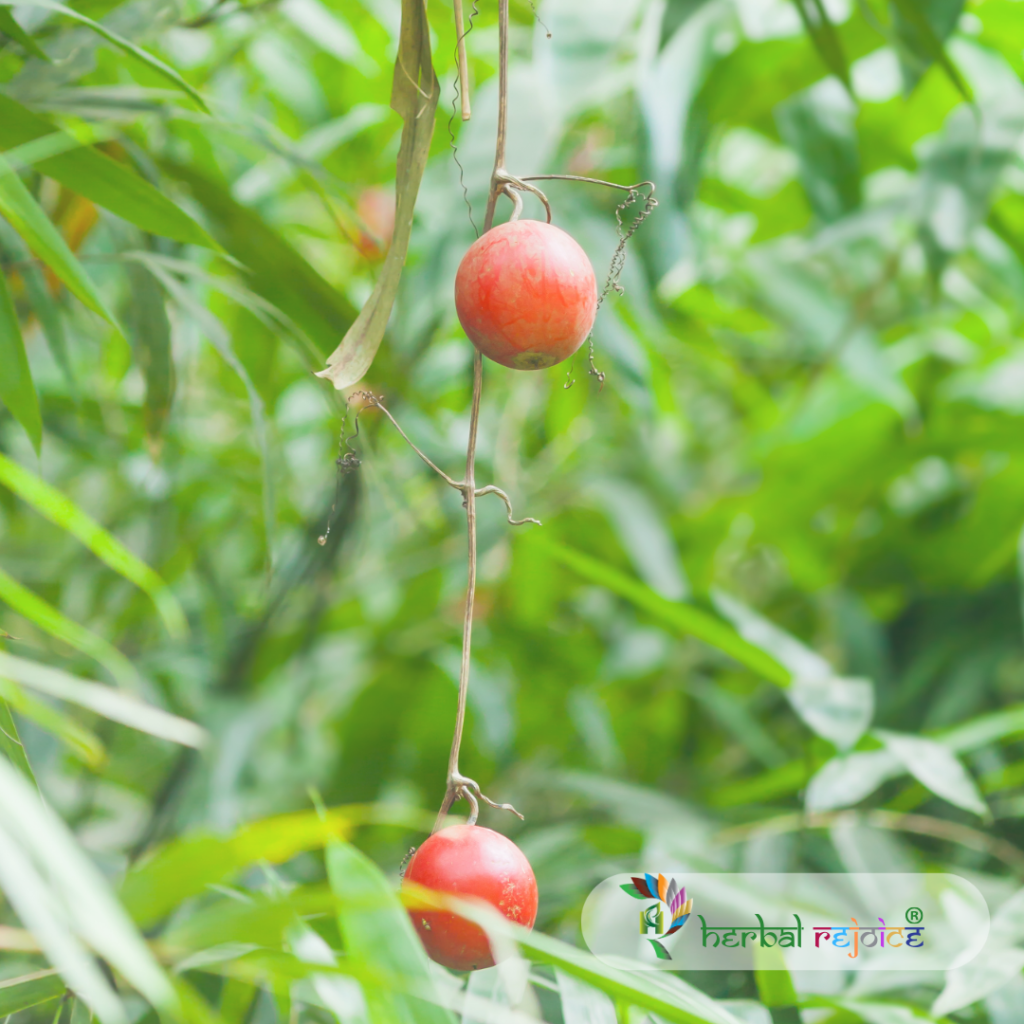Introduction
Trichosanthes bracteata, also known as Indravaaruni or Korattai, is a climbing plant from the Cucurbitaceae family that has been utilized in traditional medicine across India, particularly in Ayurveda and Siddha practices. Despite its relative obscurity compared to more famous medicinal plants, Trichosanthes bracteata holds significant therapeutic potential. This article explores the various medicinal properties of this plant, its traditional uses, and the scientific compounds that contribute to its healing capabilities.
Botanical Overview
Trichosanthes bracteata is widely distributed throughout India, thriving primarily in moist areas. The plant is a climber, easily recognizable by its green leaves and small white flowers. It is often found in the wild, where it is harvested for medicinal purposes. The plant is known by various names depending on the region and tradition: in Ayurveda, it is called Indravaaruni, Vishaalaa, Mahaakaala, or Mahendra-vaaruni; in Siddha and Tamil traditions, it is referred to as Korattai; and in folklore, it is known as Mahkaar, Maakaal, Laal Indraayana, or Kondal.
Traditional Uses in Ayurveda and Siddha Medicine
In traditional Indian medicine, Trichosanthes bracteata has been valued for its diverse therapeutic applications. Its action is often compared to that of Citrullus colocynthis, another plant in the Cucurbitaceae family known for its potent medicinal properties. However, it is important to note that while Trichosanthes bracteata shares some similarities with Citrullus colocynthis, it also possesses unique attributes that make it valuable in its own right.
1. Anti-Asthmatic and Respiratory Relief:
One of the most notable uses of Trichosanthes bracteata is in the treatment of asthma and other respiratory conditions. The fruit of the plant, despite being poisonous in its raw form, is smoked to alleviate symptoms of asthma and lung diseases. This traditional practice has been passed down through generations, with many claiming significant relief from respiratory discomfort after using the plant.
2. Anti-Inflammatory Properties:
The anti-inflammatory properties of Trichosanthes bracteata make it an effective remedy for various conditions involving inflammation. In Ayurveda and Siddha medicine, the plant is used to treat rheumatic affections, a condition characterized by inflammation of the joints, muscles, or fibrous tissue. It is also employed in the treatment of dental diseases, weakness of limbs, and hemicrania—a type of severe headache.
3. Cathartic Effects:
Trichosanthes bracteata is known for its cathartic effects, meaning it can induce bowel movements and relieve constipation. This property is particularly useful in cleansing the digestive system and promoting overall digestive health. However, due to the toxic nature of the fruit, it is essential that it is used under the guidance of a trained practitioner to avoid potential poisoning.

Phytochemical Composition
The medicinal properties of Trichosanthes bracteata are largely attributed to its rich phytochemical composition. Researchers have identified several key compounds within different parts of the plant, each contributing to its therapeutic effects.
1. Trichotetrol:
One of the most significant compounds found in the root of Trichosanthes bracteata is trichotetrol, a tetrahydroxypentacyclic triterpenoid. This compound has been studied for its potential health benefits, including its anti-inflammatory and antioxidant properties. Trichotetrol is believed to play a crucial role in the plant’s ability to reduce inflammation and provide relief from various inflammatory conditions.
2. Cyclotrichosantol and Cycloeucalenol:
The leaves of Trichosanthes bracteata contain cyclotrichosantol and cycloeucalenol, two compounds that have garnered interest for their potential medicinal applications. Cyclotrichosantol, in particular, has shown promise in preliminary studies for its ability to modulate the immune system and provide anti-inflammatory effects. Cycloeucalenol, on the other hand, is known for its potential role in supporting overall health and well-being.
3. Haemagglutinating Activity:
The seed extract of Trichosanthes bracteata has demonstrated haemagglutinating activity, meaning it can cause the clumping of red blood cells. While this may sound alarming, it is an indication of the plant’s potential to influence the immune system and blood health. Further research is needed to fully understand the implications of this activity, but it adds another layer to the plant’s complex medicinal profile.
Precautions and Considerations
While Trichosanthes bracteata offers a range of medicinal benefits, it is crucial to approach its use with caution. The fruits of the plant are poisonous if consumed raw, and improper use can lead to severe health consequences. It is strongly recommended that Trichosanthes bracteata be used only under the supervision of a qualified healthcare professional, particularly those trained in traditional Ayurvedic or Siddha medicine.
Additionally, due to its potent effects, Trichosanthes bracteata should not be used by pregnant or breastfeeding women, young children, or individuals with severe health conditions without professional guidance.
Conclusion
Trichosanthes bracteata, with its diverse range of medicinal properties, stands as a testament to the rich tradition of herbal medicine in India. Though lesser-known compared to other medicinal plants, its effectiveness in treating conditions like asthma, inflammation, and digestive issues makes it a valuable resource in traditional healing practices. The plant’s unique phytochemical composition, including compounds like trichotetrol, cyclotrichosantol, and cycloeucalenol, further underscores its potential as a natural remedy.
Frequently Asked Questions
What is Trichosanthes bracteata?
Trichosanthes bracteata is a plant belonging to the Cucurbitaceae family, known for its various medicinal properties in Ayurveda and Siddha traditions.
What are the traditional names of Trichosanthes bracteata?
In Ayurveda, it is referred to as Indravaaruni, Vishaalaa, Mahaakaala, or Mahendra-vaaruni. In Siddha and Tamil traditions, it is called Korattai.
Where can Trichosanthes bracteata be found?
Trichosanthes bracteata can be found throughout India, mainly in moist areas.
What are the medicinal properties of Trichosanthes bracteata?
Trichosanthes bracteata has cathartic, antiasthmatic, and anti-inflammatory properties, making it useful in treating various health conditions.
Can the fruits of Trichosanthes bracteata be consumed?
No, the fruits of Trichosanthes bracteata are poisonous and should not be consumed.
What is the haemagglutinating activity of the seed extract?
The seed extract of Trichosanthes bracteata has shown haemagglutinating activity, which may have implications for its use in certain applications.
What are the traditional uses of Trichosanthes bracteata?
In traditional medicine, Trichosanthes bracteata is used to treat asthma, lung diseases, rheumatic affections, weakness of limbs, dental diseases, and hemicrania.
What compounds are present in Trichosanthes bracteata?
Trichosanthes bracteata contains trichotetrol, a tetrahydroxypentacyclic triterpenoid in its root. The leaves contain cyclotrichosantol and cycloeucalenol.
What are the potential health benefits of trichotetrol?
Trichotetrol, found in the root of Trichosanthes bracteata, may have various health benefits, which are still being studied.
What are the potential health benefits of cyclotrichosantol and cycloeucalenol?
Cyclotrichosantol and cycloeucalenol, present in the leaves of Trichosanthes bracteata, may have their own unique health benefits that warrant further research.
Can Trichosanthes bracteata be used in modern medicine?
While Trichosanthes bracteata has a long history of use in traditional medicine, further research is needed to determine its potential applications in modern medicine.
Is Trichosanthes bracteata safe to use?
As with any medicinal plant, it is important to consult with a healthcare professional before using Trichosanthes bracteata to ensure its safety and appropriate usage.
Are there any known side effects of using Trichosanthes bracteata?
Side effects may vary depending on the individual and the dosage used. It is best to consult with a healthcare professional for personalized advice.
Can Trichosanthes bracteata be used to treat dental diseases?
Trichosanthes bracteata has been traditionally used for dental diseases, but further research is needed to validate its efficacy and safety for this specific use.
How can Trichosanthes bracteata be used as an antiasthmatic?
Trichosanthes bracteata is traditionally smoked to alleviate symptoms of asthma and other lung diseases.
Can Trichosanthes bracteata be used for rheumatic affections?
Yes, Trichosanthes bracteata has anti-inflammatory properties that make it useful for treating rheumatic affections.
Are there any other traditional uses for Trichosanthes bracteata?
Trichosanthes bracteata has been used traditionally for weakness of limbs and hemicrania, a type of headache. Additional research is needed to validate these uses.



